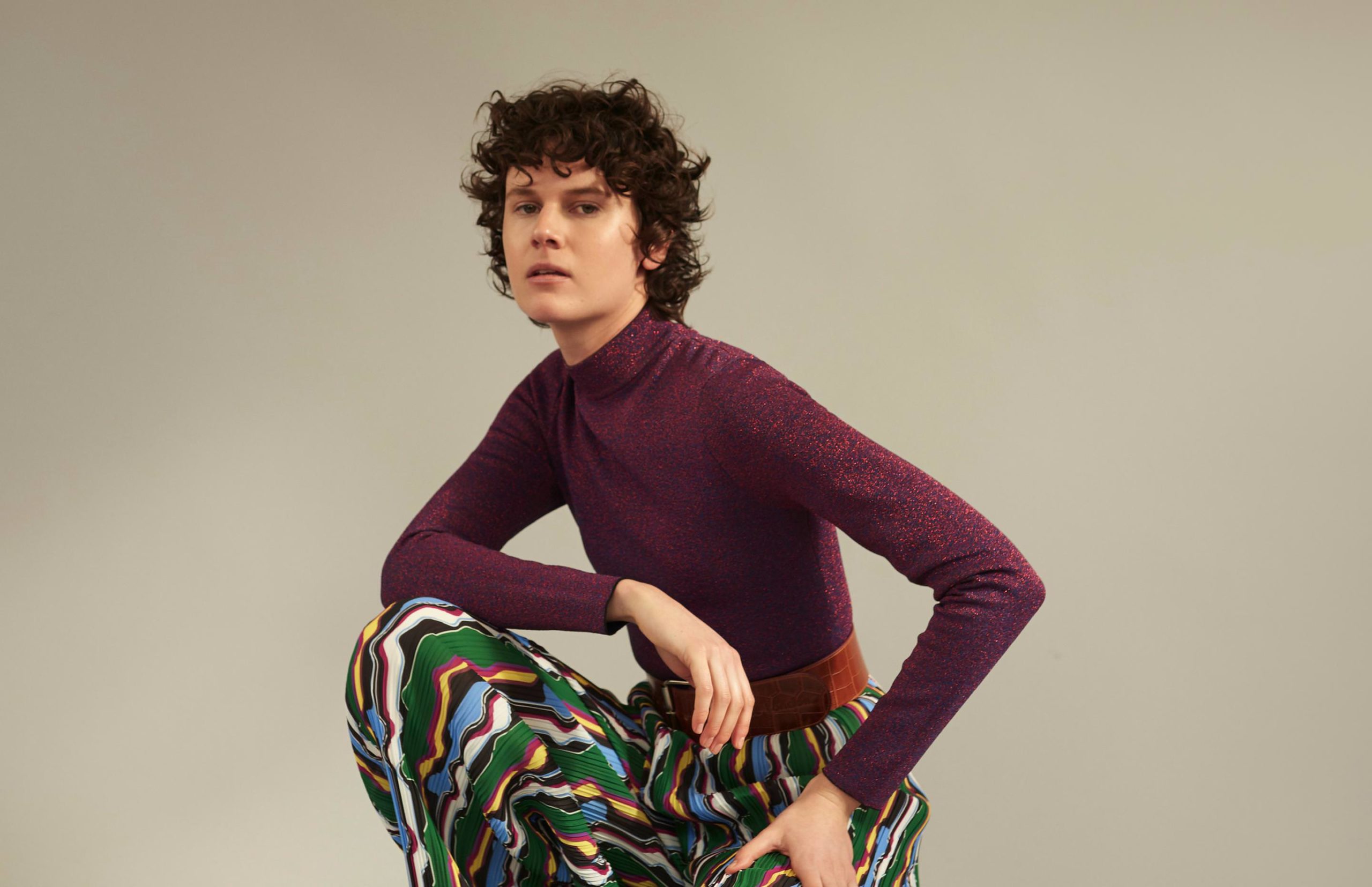Before founding Solace London in 2013, Laura Taylor and Ryan Holliday-Stevens were longtime pals who connected over the electronic music scene in Northern England. Holliday-Stevens had always made his own clothes and started doing so for Taylor, too. While they were out, friends would inquire about the designs, and the idea to start their own label grew organically.
Both brought to Solace London a background of experience in design, production, retail, and marketing, which shaped an approach for them that goes beyond just their collection vision. It’s about every aspect—e-commerce, manufacturing, branding—but above all, the customer. Who will ultimately where their clothes and when (for example, if Resort comes out in November, they’ll offer some knitwear since many places are indeed cold that month) drives what they do, a concept that is surprisingly rare in fashion’s collection- and pre-collection-driven calendar.
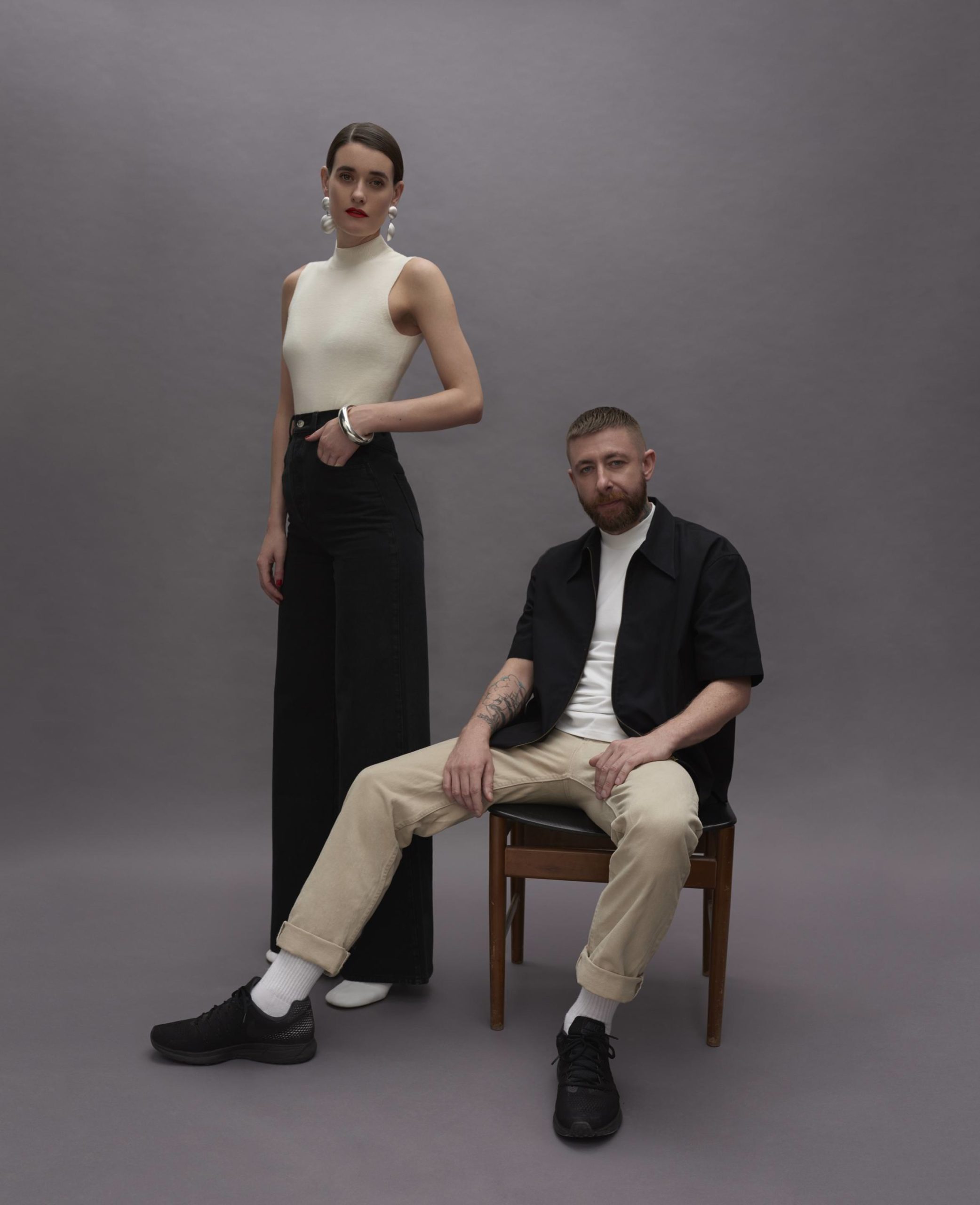
Laura Taylor and Ryan Holliday-Stevens
Courtesy of Solace London
Whitewall spoke with Taylor and Holliday-Stevens about their friendship, their affinity for a dramatic silhouette, and how art and architecture kick-start their creative process.
WHITEWALL: You both came to Solace London with varied backgrounds. So what role did fashion play in your lives?
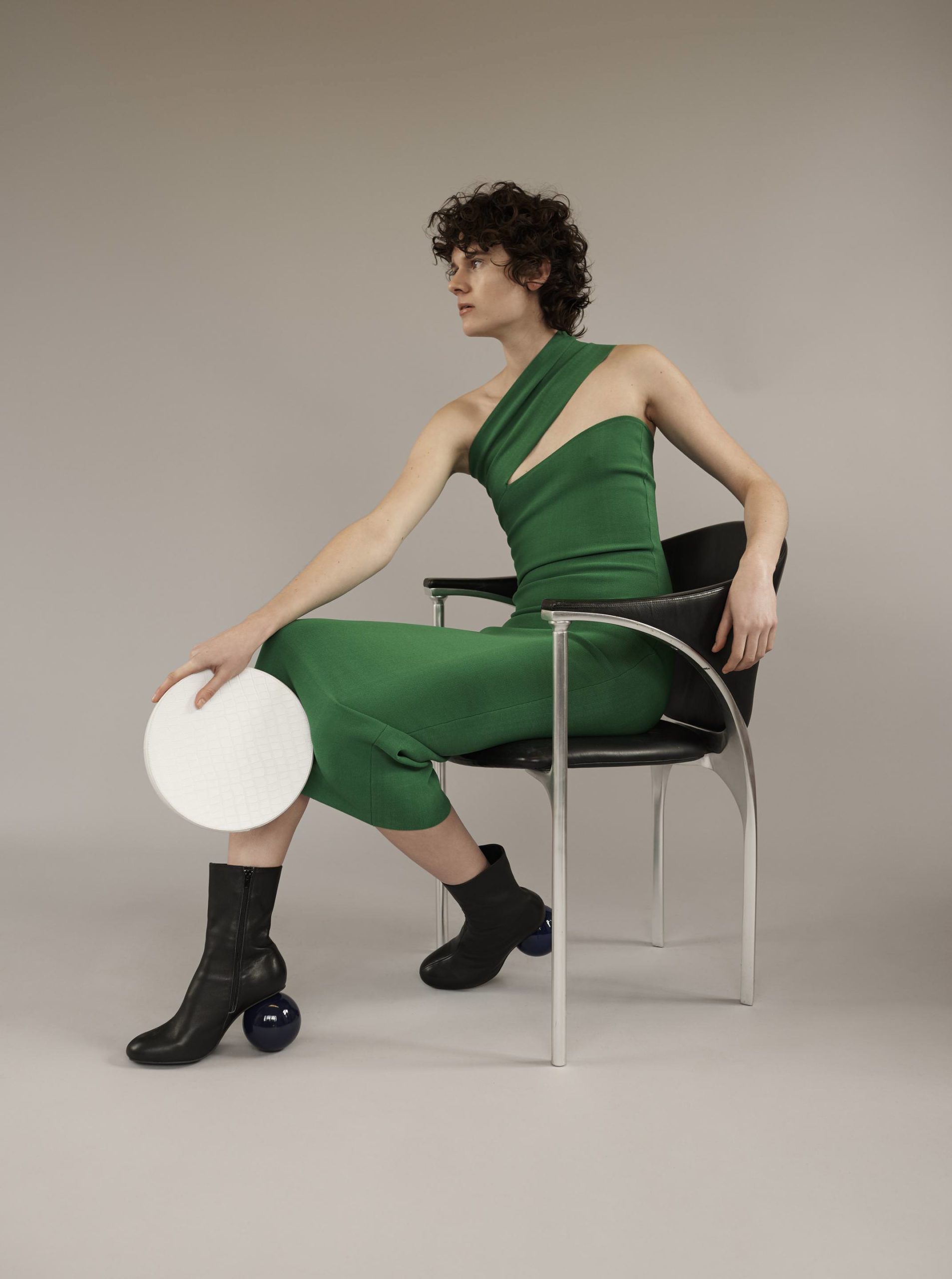
Solace London fall/winter 2018.
RYAN HOLLIDAY-STEVENS: I just loved to make my own clothes. It wasn’t much about fashion; it was about making clothes and being able to make something out of raw material.
LAURA TAYLOR: When I was younger, my mum used to make clothes for me and we’d choose fabric together. She would always make quite unusual things to wear for parties and things. I always enjoyed clothes. And then as I got old enough to buy magazines, that’s what I did. I wasn’t as much into designers but features on people inside fashion wear—so you can see how designs were applied to their everyday life.
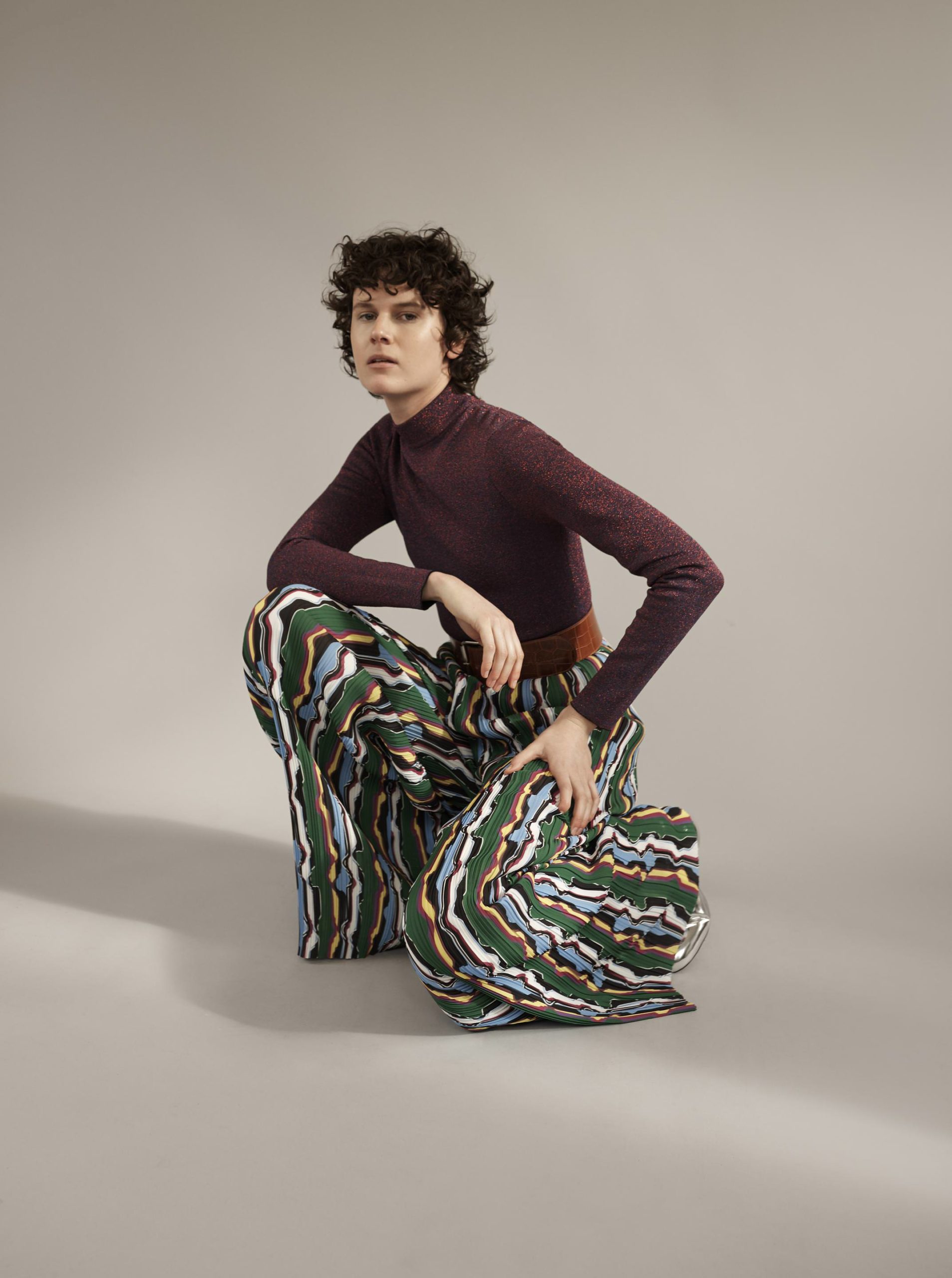
Solace London fall/winter 2018.
It was after meeting Ryan in the North of England when we started collaborating and working on things together.
RHS: At that point I was very aware of Vivienne Westwood, Alexander McQueen, very avant-garde designers. Which is the complete opposite, really, of our aesthetic, but I started to really appreciate that kind of luxury fashion and designers and certainly how British designers put their own unique voice into the fashion world. It was the first time I was falling in love with the industry rather than just the art of making clothes.
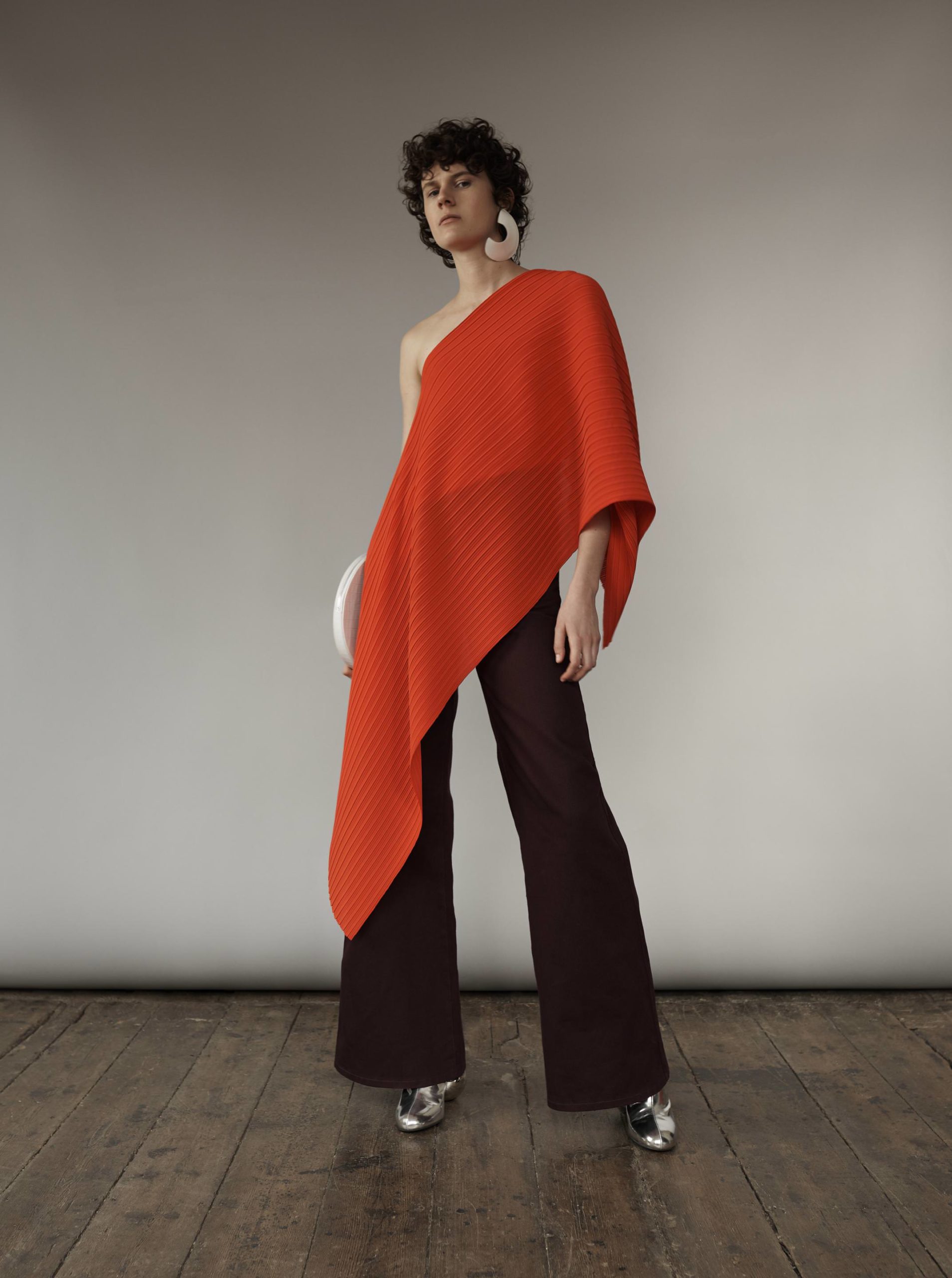
Solace London fall/winter 2018.
WW: When it came to coming together and starting Solace London, what were you hoping to offer that no one else was?
RHS: I don’t think that’s how we came to it. We just loved working together. We had been really close friends for nearly ten years. We didn’t come up with the idea of a brand to necessarily fill a gap in the market. We have a level of taste that naturally evolved over the years. That was the main point—trying to create something that we were both in control of and both proud of.
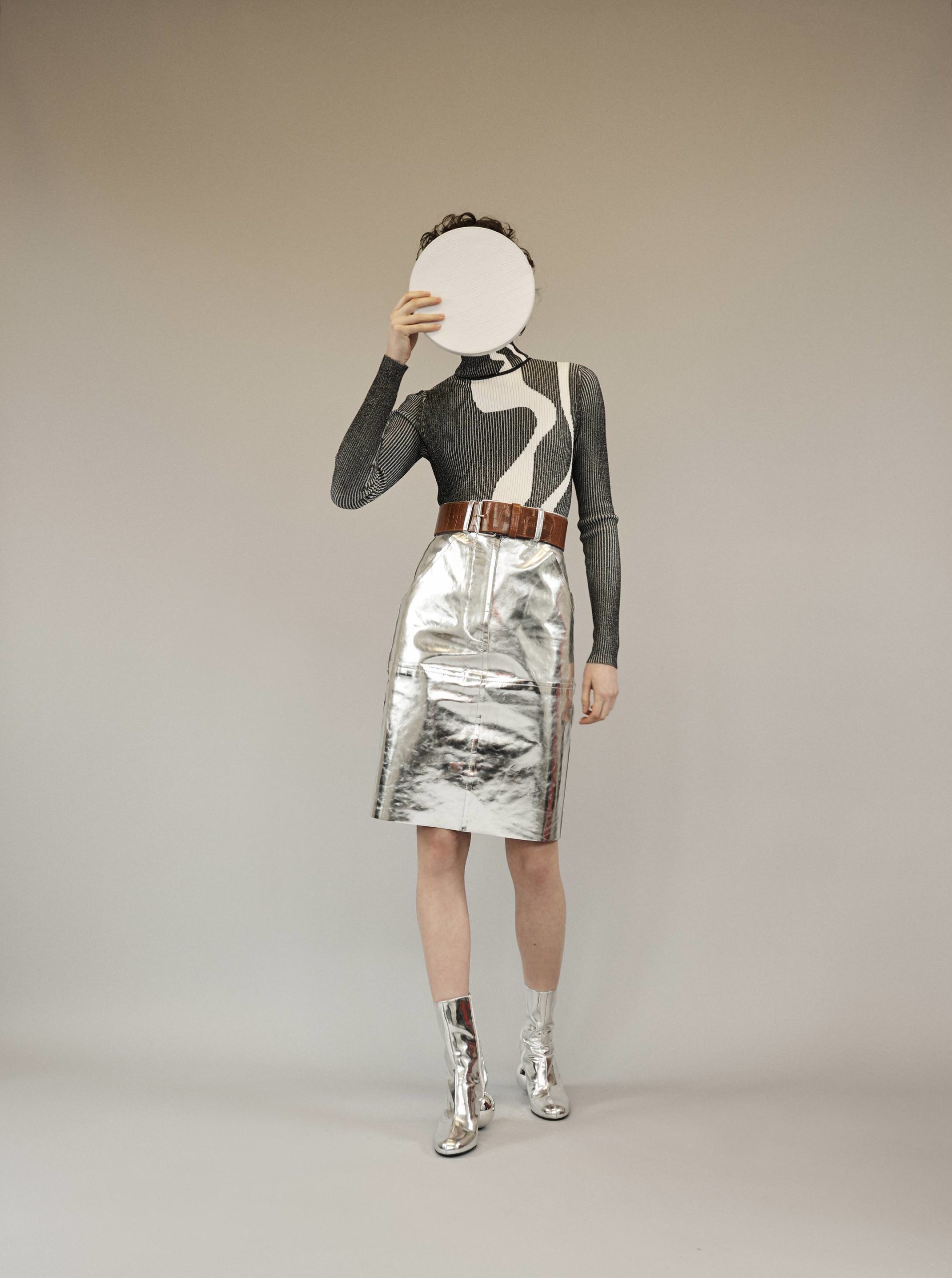
Solace London fall/winter 2018.
LT: It was more about starting something we could both share and grow in a way where the direction of the brand was totally up to us and however we felt.
RHS: We met through the electronic music scene in the North of England. Underground music in the late ’90s, early 2000s, and its relation with fashion has always been our common ground. We spent a lot of time forming our design aesthetic through music. It was a totally different subculture that I think is quite unique to the North of England.
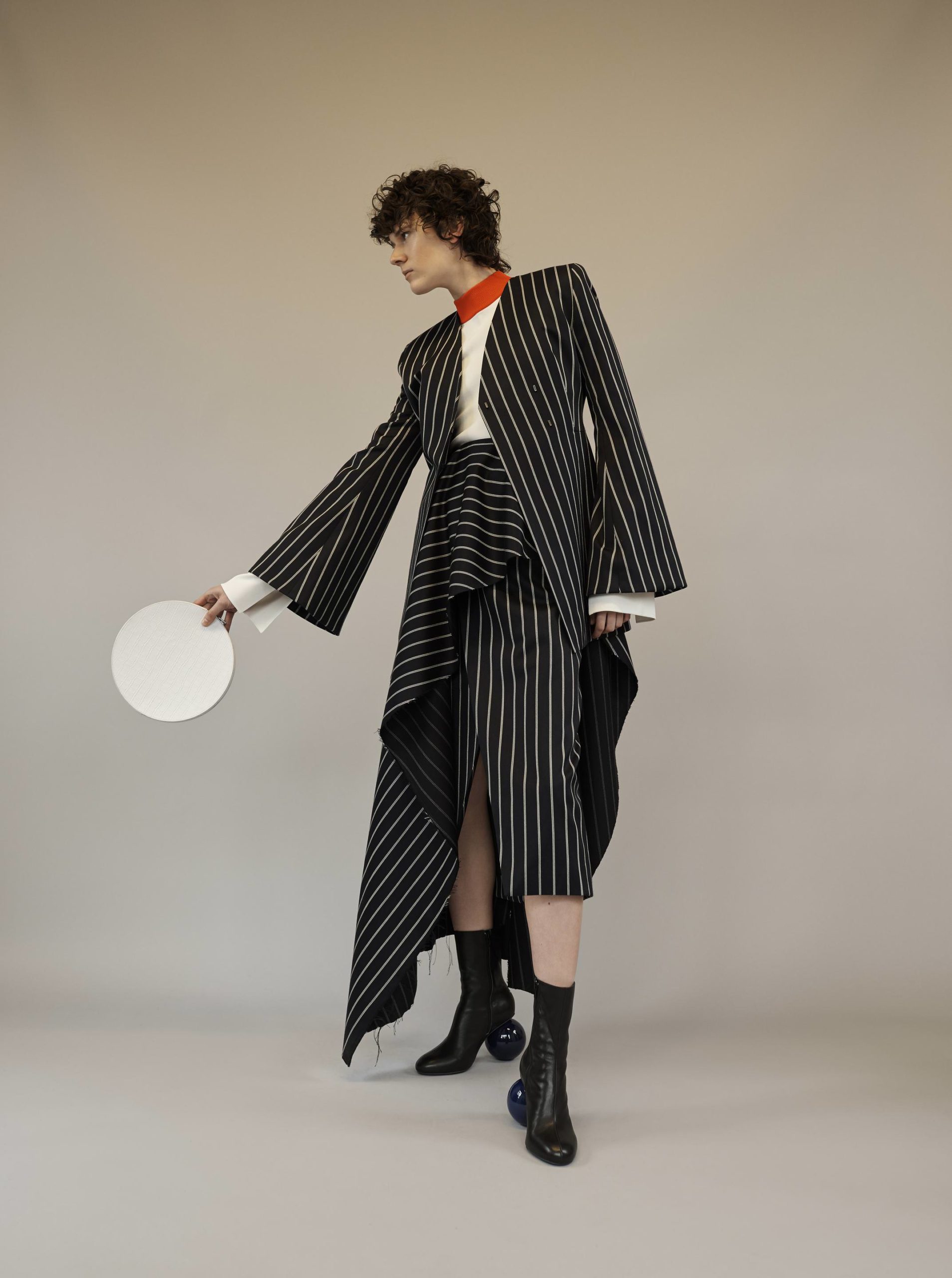
Solace London fall/winter 2018.
LT: We started making clothes together that we couldn’t find anywhere else for various reasons. I would go out in them, so would Ryan, and people would be asking where they could get hold of them.
WW: How did your earlier experiences in retail and marketing help? That kind of holistic knowledge isn’t something every designer who founds a brand is equipped with from the start.
RHS: I completely agree. We almost founded the brand from an anti-fashion perspective. We don’t just design for the sake of design; we create products for the consumer and we have a woman in mind. It’s very much a collaboration of my taste, Laura’s taste, what she would actually want to wear, and what we think is relevant intuitively for the moment in time. We’re very product-driven as designers.
It’s realistic. We’re running a business. It’s a global business and we make sure that the woman that we design for can actually wear our product. She can take it from a business meeting to a bar to a nightclub, to a wedding, to a special event that she’s going to remember for the rest of her life.
WW: Your collections have statement pieces—there’s some drama there—but they’re also quite wearable. How do you balance that?
RHS: We want to be a commercially viable business. We don’t want to make these amazing garments that are technically very detailed but can’t be manufactured or worn. We want our products to exist in the real world for real women in their real lives. There’s always that tension between statement making and drama but also being extremely wearable and how you can pair it in different ways—especially with separates. We try to make it so you can get a lot of versatility out of a garment. We keep that in mind when we’re designing.
LT: We’re also quite keen to produce collections that are wearable in the time of year they deliver. So for Resort, the collection that we just finished, there’s a real mixture in there of fabric weight. We didn’t want to make a high summer collection in November. Some places in the world are actually quite cold at that time in the northern hemisphere so you’ll see a real combination of knitwear, you’ll see softer fabrics for a seasonal feeling. Our woman is very much about buying something she wants to wear straight away.
WW: There’s a lot of conversation around keeping retail alive in the luxury and fashion industries. How do you address that?
RHS: I think the most important thing that I think is so often overlooked by the entire fashion industry is that it should be customer-centric. You are designing products that you want to sell to a customer, so what does the customer want? Not what does the magazine want or the fashion editor want or the buyer at the store want; what does the customer want?
Quite often when we look around, a lot of other brands and a lot of stores seem like they’re still stuck in the past somewhat. They’re creating this fictional world where something doesn’t look very real or appropriate.
LT: There’s nothing worse than buying something and not being able to wear it for whatever reason.
RHS: It seems so obvious, but the person buying the product should be able to wear the product. It just makes more sense to me that the person buying the product drives the whole process.
WW: Can you tell me about your interest in contemporary art and design?
RHS: We travel together all the time for business, and we also go on holiday together as friends. That’s our downtime. We’re constantly hanging out, but we’re very much in our studio environment, so whenever we’re in New York, we’ll go to the Whitney or The Met Breuer, or MoMA PS1. We went to the Salone—the design fair—in Milan together. It’s those kinds of times where everything that’s distracting from running a business just slips away and all of a sudden you’re in a beautiful space. It’s literally the best way to start the creative process, having that time out of the office and seeing what’s going on with different galleries around the world.
This article appears in the fall 2018 Couture Issue of Whitewall, out now.



